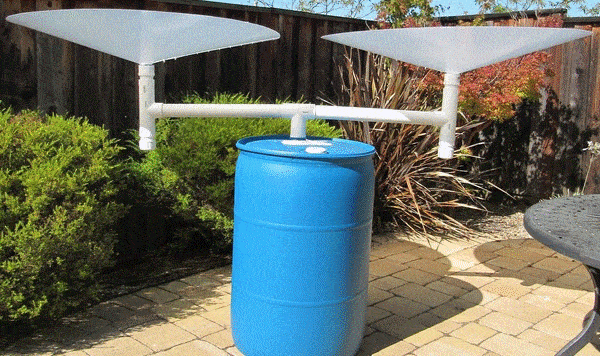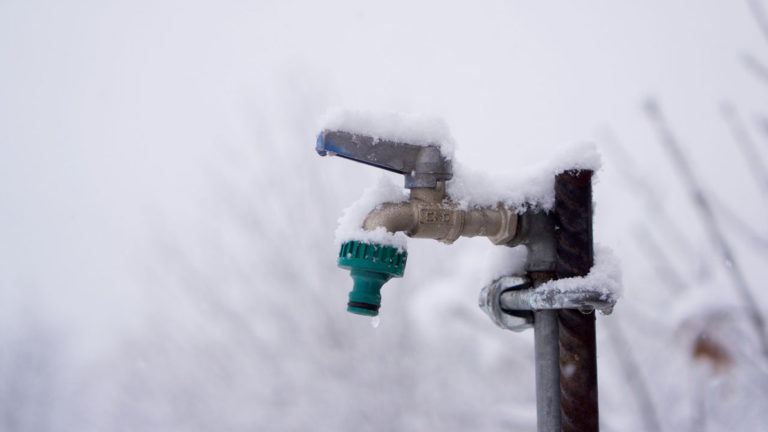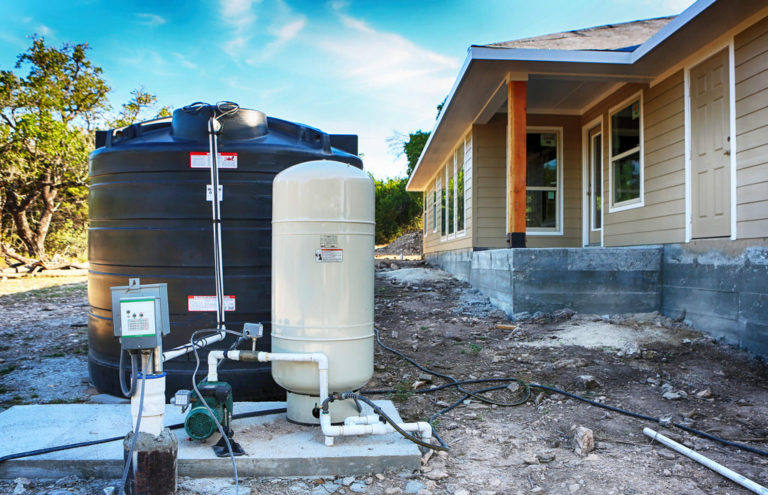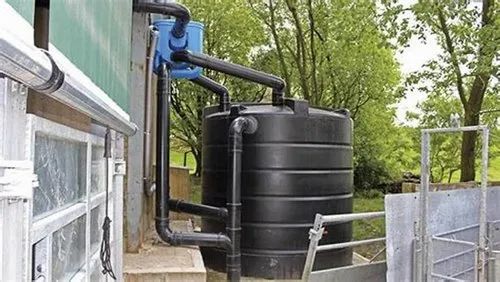Are you tired of paying high water bills?
Do you want to reduce your carbon footprint and rely less on municipal water supplies?
Look no further than harvesting rainwater!
With a few simple tools and materials, you can build your own rainwater collection and filtration system at home.
Not only will this save you money on your water bill, but it’ll also provide you with a sustainable and eco-friendly source of clean drinking water.
We’ll show you how to DIY a rainwater collection and filtration system on a budget, so you can start saving money and doing your part for the environment today!
Collecting rainwater
You can use a simple gutter system to collect rainwater from your roof. Make sure to use a downspout extender to direct the water into a storage tank.
By installing a gutter system on your roof, you can capture and channel rainwater into a storage tank.
The first step is to select a high-quality gutter system that can withstand the elements and efficiently collect rainwater.
Look for a system that is made from durable materials, such as aluminum or vinyl, and that has a large capacity to collect as much water as possible.
Once you have installed the gutter system, the next step is to direct the water into a storage tank.
This is where a downspout extender comes in handy.
These devices attach to the downspout of your gutter system and extend it to the ground, allowing you to easily direct the water into your storage tank.
Make sure to choose a downspout extender that is sturdy and made from a material that can withstand the weight of the water, such as metal or heavy-duty plastic.
With a gutter system and a downspout extender in place, you can begin collecting rainwater and storing it in a tank for later use.
This can be a great way to save money on your water bill, as well as reduce your environmental footprint by using a natural resource that would otherwise be wasted.
You can use the collected rainwater for a variety of purposes, such as watering plants, washing cars, or even drinking water (after proper treatment and filtration, of course).
By taking advantage of the power of rainwater collection, you can make a positive impact on your wallet and the environment.
Choose the right storage tank
You can use a large plastic drum or a water tank made of food-grade materials. Make sure the tank is clean and free of contaminants before use.
When it comes to selecting the right storage tank for your water storage needs, there are several factors to consider.
First and foremost, you’ll want to choose a tank that is made of food-grade materials to ensure the water is safe for consumption.
Look for tanks that are made from high-quality plastics or stainless steel, as these materials are less likely to leach harmful chemicals into the water.
You’ll want to consider the size of the tank, as larger tanks will provide more storage capacity and may be more cost-effective in the long run.
Another important consideration is the cleanliness of the tank.
Before using the tank, make sure it is thoroughly cleaned and free of any contaminants.
This may involve washing the tank with soap and water, or using a sanitizing solution to kill any bacteria or other microorganisms that may be present.
It’s also a good idea to regularly inspect the tank for any signs of damage or wear and tear, as these can compromise the safety and effectiveness of the water storage system.
Overall, choosing the right storage tank for your water storage needs is a critical decision that should not be taken lightly.
By considering factors such as materials, size, and cleanliness, you can ensure that your water is safe and healthy to drink.
Regularly inspecting and maintaining your tank will help ensure that it continues to function effectively and safely over time.
Filter the water
Use a simple sedimentation filter made of a polypropylene mesh or a porous pipe to remove any debris and sediment from the water.
To ensure the safety and quality of the water for your garden, it’s essential to filter out any debris and sediment that may be present in the water source.
One effective way to do this is by using a simple sedimentation filter made of a polypropylene mesh or a porous pipe.
These types of filters are designed to catch any larger particles and sediment in the water, including dirt, sand, and other impurities.
By using a sedimentation filter, you can significantly reduce the amount of contaminants in your water, which will help to improve the overall health of your plants and the quality of the irrigation water.
This step can also help to prevent clogs and blockages in your irrigation system, which can save you time and money in the long run.
To use a sedimentation filter, simply place the filter in the path of the water flow and allow the water to pass through it.
This will capture any sediment and debris, leaving you with cleaner, more secure water for your garden.
Add a carbon filter
A carbon filter can remove any organic matter and improve the taste and odor of the water. You can use a piece of cloth or a carbon block filter.
Using a carbon filter can significantly improve the taste, odor, and overall quality of your drinking water.
Carbon filters are designed to remove any organic matter or impurities that may be present in your water, such as chlorine, chemicals, and bacteria.
By installing a carbon filter, you can enjoy clean, fresh-tasting water that is free from any unpleasant odors or aftertastes.
Carbon filters can help to reduce any lingering particles or sediment that may be present in your water, resulting in a clearer, more refreshing drinking experience.
When choosing a carbon filter, it’s important to consider the type of carbon used and the filter’s capacity.
Some carbon filters use activated carbon, which is made from coconut shells or other organic materials and has a higher absorption capacity than other types of carbon.
This means that activated carbon filters can remove more impurities and provide cleaner, better-tasting water.
You should consider the size of the filter and its flow rate, as a larger filter with a higher flow rate can handle more water and provide a more consistent filtration experience.
Overall, adding a carbon filter to your water filtration system can provide numerous benefits, including improved taste, odor, and water quality.
By investing in a high-quality carbon filter, you can enjoy cleaner, healthier drinking water that tastes great and supports your overall well-being.
Install an overflow valve
An overflow valve will prevent the water from overflowing and damaging your system. You can use a simple float valve or a ball valve.
Installing an overflow valve is a important step in protecting your hydronic heating system from water damage.
This valve is designed to prevent the water from overflowing and causing costly repairs or replacement of sensitive system components.
There are two main types of overflow valves to choose from: simple float valves and ball valves.
The simple float valve features a float that rises and falls with the water level, triggering the valve to open and close as needed.
This valve is relatively inexpensive and easy to install, making it a great option for homeowners on a budget.
The ball valve, on the other hand, features a ball that rotates to open and close the valve, providing a more precise and reliable solution.
Both types of overflow valves are easy to maintain and can be installed at any point in the system, providing peace of mind and protection for your hydronic heating system.
Add UV purification
A UV purifier can kill any bacteria or viruses in the water. You can use a UV lamp or a UV-C light.
Adding a UV purifier to your DIY home aquaponics system is a simple and effective way to kill any bacteria or viruses in the water.
UV purifiers use ultraviolet light to target and destroy the DNA of microorganisms, including bacteria and viruses, making it a great addition to your aquaponics system.
There are two main types of UV purifiers that can be used in an aquaponics system: UV lamps and UV-C lights.
UV lamps are typically more affordable and can be used for both bacteria and virus control, while UV-C lights are more expensive but can be more effective against viruses.
When selecting a UV purifier, consider the size of your system, the flow rate of water, and the intensity of the UV light needed to effectively kill microorganisms.
Be sure to maintain the UV purifier regularly to ensure optimal performance.
By adding a UV purifier to your DIY home aquaponics system, you can ensure the health and safety of your fish and plants, and enjoy a thriving and productive system.
Monitor the system
Regularly check the water level in the storage tank, the filter, and the UV purifier. Make sure the system is working properly and make any necessary adjustments.
To ensure your reverse osmosis water filtration system is working effectively and efficiently, it’s important to monitor the system regularly.
This includes checking the water level in the storage tank, the filter, and the UV purifier.
You should check the water level at least once a week, and top off the tank as needed.
You should inspect the filter for any signs of clogging or damage and replace it as needed.
The UV purifier should also be checked regularly to ensure it’s functioning properly.
Make any necessary adjustments to maintain proper system function and optimize the quality of your drinking water.
To ensure your reverse osmosis water filtration system is working effectively and efficiently, you must monitor the system regularly.
This includes checking the water level in the storage tank, the filter, and the UV purifier.
You should check the water level at least once a week, and top off the tank as needed.
You should inspect the filter for any signs of clogging or damage and replace it as needed.
The UV purifier should also be checked regularly to ensure it’s functioning properly.
Make any necessary adjustments to maintain proper system function and optimize the quality of your drinking water.
Maintain the system
Clean the filters regularly, and make sure the storage tank is kept covered to prevent contamination. Regularly inspect the system for any leaks or damage.
Regular maintenance is important to ensure your septic system is functioning properly and efficiently.
Cleaning the filters regularly is essential to prevent clogging and ensure that wastewater is treated effectively.
This can be done by pumping out the solids and debris that accumulate in the filters over time.
It is important to keep the storage tank covered to prevent contamination from surface water or other foreign substances.
This will help maintain the quality of the wastewater and prevent any harmful pathogens from entering the system.
Moreover, it is essential to regularly inspect the system for any leaks or damage.
This includes checking the pipes, connections, and tank for any signs of wear and tear.
Any leaks or damage can compromise the effectiveness of the system and lead to costly repairs or even system failure.
By identifying and addressing any issues promptly, you can prevent more serious problems from developing and ensure your septic system remains in good working condition.
Overall, maintaining your septic system requires regular attention to ensure it operates at its best.
Want More? Dive Deeper Here!
Hey there! If you’re the type who loves going down the rabbit hole of information (like we do), you’re in the right spot. We’ve pulled together some cool reads and resources that dive a bit deeper into the stuff we chat about on our site. Whether you’re just killing time or super into the topic, these picks might just be what you’re looking for. Happy reading!






